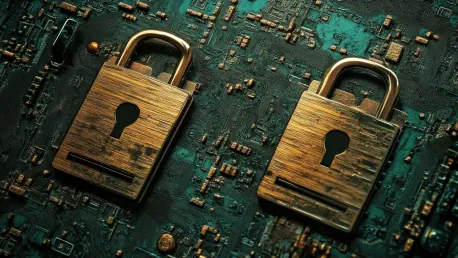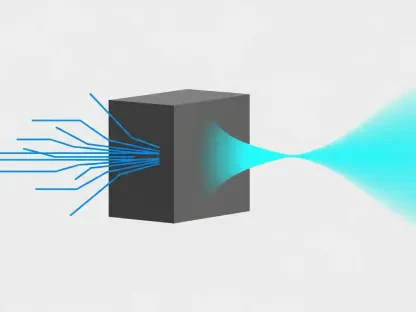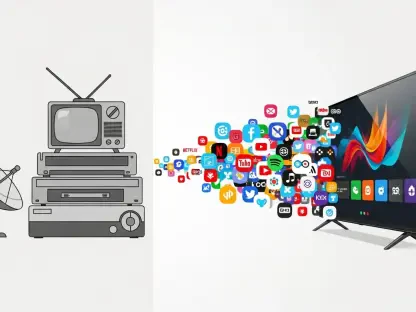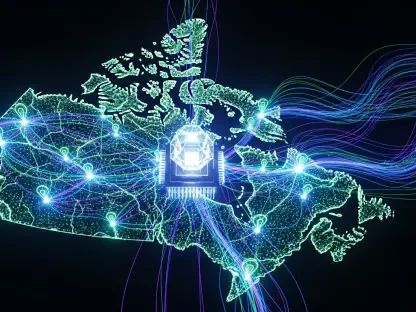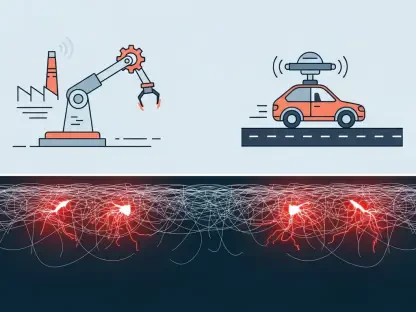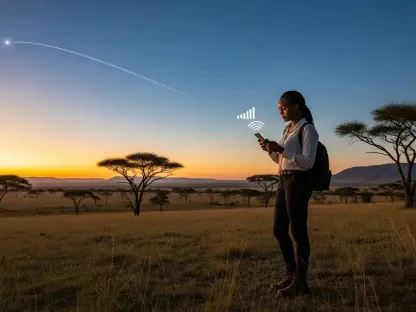Extreme weather events are increasingly threatening business operations worldwide. The integration of Internet of Things (IoT) sensors and advanced forecasting tools is emerging as a pivotal strategy to safeguard enterprises against such disruptions. This technology offers critical support for businesses, enabling them to anticipate, prepare for, and mitigate the impacts of climate-related disasters, thus enhancing resilience and reducing economic losses.
Increasing Weather-Related Challenges
Recent years have seen a surge in weather-related losses, compelling businesses to seek innovative solutions. IoT sensors and forecasting tools are becoming essential in understanding and mitigating these impacts. The National Oceanic and Atmospheric Administration (NOAA) has documented a dramatic rise in climate disaster events, with the U.S. experiencing 27 incidents in 2024 alone, each causing over $1 billion in economic losses. Gallagher Re’s report from the same year highlighted a staggering $417 billion in global economic losses due to extreme weather, of which only $154 billion were insured.
The economic consequences of extreme weather are prompting businesses to adopt more advanced technologies to monitor and predict potential threats. By leveraging IoT sensors, companies can gain real-time insights into environmental conditions, allowing them to take immediate actions that can prevent or minimize damage. This proactive approach is vital in an era where climate change is exacerbating the frequency and severity of weather events, posing significant risks to business continuity.
Technological Advancements
Innovations in IoT sensors are transforming risk management by offering real-time, granular environmental insights. These advancements enable businesses to anticipate and react swiftly to potential threats. IoT sensors monitor a wide array of conditions, including smoke particulates, gas levels, moisture, heat, pipe flow rate, ambient light, noise levels, and motion tracking. Such precise monitoring supports early detection, allowing targeted and immediate interventions to prevent catastrophic damage.
The ability to collect and analyze environmental data in real-time is revolutionizing the way businesses approach risk mitigation. IoT sensors provide detailed information on site-specific conditions, enabling companies to implement tailored strategies that address specific vulnerabilities. As technological advancements continue, the integration of IoT sensors with advanced analytics and machine learning algorithms is expected to enhance predictive capabilities, providing even more accurate forecasts and timely warnings.
Enhanced Risk Modeling and Forecasting
Advanced forecasting tools, leveraging IoT data, are vital in constructing detailed risk models. These models offer comprehensive insights that aid in crafting robust mitigation strategies. Combining real-time IoT sensor data with advanced forecasting allows for accurate predictions and timely updates, enhancing the responsiveness to emerging threats. This integrated approach helps businesses develop more effective response plans that can be activated swiftly when extreme weather events are imminent.
Risk modeling is a critical component of disaster preparedness, and the use of IoT data significantly enhances its effectiveness. By analyzing historical weather patterns and real-time sensor data, companies can identify trends and potential risks that may not be immediately apparent. This information is crucial for making informed decisions about resource allocation, emergency planning, and infrastructure investments, ultimately improving overall resilience against climate-related disruptions.
IoT Environmental Sensors
Contemporary IoT sensors specifically address conditions impacting business sites. These sensors deliver critical data that informs protective measures against threats like wildfires, floods, water leaks, and hail. Matt Joyal, director of IoT loss control for Insight Risk Technologies, emphasizes the importance of deploying IoT sensors near valuable equipment for swift damage mitigation. This proximity ensures that sensors can detect issues immediately, allowing for rapid intervention.
The targeted nature of modern IoT sensors enables businesses to monitor high-risk areas more effectively, reducing the likelihood of severe damage. For instance, sensors placed around vulnerable infrastructure can detect water leaks or changes in environmental conditions that may indicate impending danger. These early warnings enable property owners to take necessary precautions well before disaster strikes, safeguarding assets and minimizing downtime.
Specialized Forecasting Platforms
Platforms like Previsico’s Flood Intel capitalize on IoT data to offer detailed flood forecasts. By integrating hydrological system data, these forecasts provide warnings significantly earlier than traditional alerts. This proactive approach enables businesses to implement preventative measures well in advance of potential flooding events. The integration of real-time data with advanced predictive models ensures that companies receive accurate and timely information about flood risks.
Flood Intel and similar platforms are transforming flood risk management by delivering hyper-localized forecasts that account for specific site conditions and drainage systems. These accurate predictions allow businesses to prepare for and respond to flooding incidents more effectively, minimizing damage and reducing recovery costs. Furthermore, the ability to receive early warnings empowers companies to make informed decisions about evacuation, resource allocation, and implementing protective measures.
Advanced Detection Technologies
NOAA’s National Severe Storm Laboratory employs dual polarization radar technology to predict weather phenomena such as snow, rain, and hail. This technology supports businesses in protecting assets from hail damage. Convective Capital founder Bill Clerico discusses the utility of AI-integrated cameras from Pano in detecting wildfires early. Such technologies enhance visibility, facilitating effective threat management strategies.
Advanced detection technologies are essential for protecting property and ensuring business continuity. Dual polarization radar and AI-integrated cameras offer precise, real-time information about developing weather conditions, enabling businesses to take prompt actions to safeguard their operations. Early detection of threats like wildfires and hail storms allows for better coordination of emergency responses, reducing the impact of these events on business activities.
Addressing Adoption Barriers
The adoption of IoT sensors faces certain challenges, including significant upfront costs, accountability for system maintenance, and proper stakeholder training. A clear deployment strategy is essential to justify investment and ensure efficient operation. This strategy includes managing incidents and preventing events using IoT data insights. Businesses must consider the long-term benefits of these technologies, which often outweigh initial expenses.
Proper training and maintenance are crucial to maximizing the effectiveness of IoT sensors. Stakeholders must be well-versed in operating and maintaining these systems to ensure that they function optimally. This requires dedicated efforts to train personnel and establish accountability structures that address maintenance needs. Overcoming these barriers is key to achieving widespread adoption and realizing the full potential of IoT-based solutions in disaster risk management.
Cybersecurity Concerns
IoT devices necessitate secure networks to avert cyber threats. Ensuring these devices operate on secure systems increases user trust and adoption rates. John Riggs, chief technology officer for HSB, advocates for secure networks like LoRaWAN or private cellular to bolster cybersecurity and streamline IoT integration. These secure platforms are essential for protecting sensitive data and preventing unauthorized access.
Cybersecurity is a significant concern when deploying IoT technologies, as these devices often handle critical data related to business operations and emergency planning. Establishing robust security protocols and using dedicated networks ensures that IoT systems remain resilient against cyberattacks. By addressing cybersecurity issues proactively, businesses can foster greater trust among stakeholders and encourage the adoption of IoT solutions for extreme weather mitigation.
The Role of the Insurance Industry
Extreme weather events are increasingly posing significant threats to business operations across the globe. Companies are finding that the integration of Internet of Things (IoT) sensors along with advanced forecasting tools is becoming a crucial strategy to protect themselves from such disruptions. These technological advancements provide essential support, allowing businesses to forecast, get ready for, and minimize the damage caused by climate-related disasters. This proactive approach not only bolsters business resilience but also helps in reducing economic losses associated with these extreme weather events.
IoT sensors can monitor real-time environmental conditions, providing timely alerts about potential hazards. Advanced forecasting tools analyze vast data sets from various sources, offering accurate predictions of upcoming weather patterns. By utilizing these technologies, companies can implement preventive measures, such as securing assets or adjusting supply chain logistics, thereby ensuring smoother operations during adverse conditions.
Moreover, the ability to anticipate and respond to extreme weather events efficiently enables businesses to maintain continuity, protect their workforce, and preserve their reputation in the marketplace. In a world where climate change is an ever-growing concern, the smart use of IoT and predictive technologies stands out as a vital investment for businesses aiming to stay ahead of the curve and safeguard their future.
